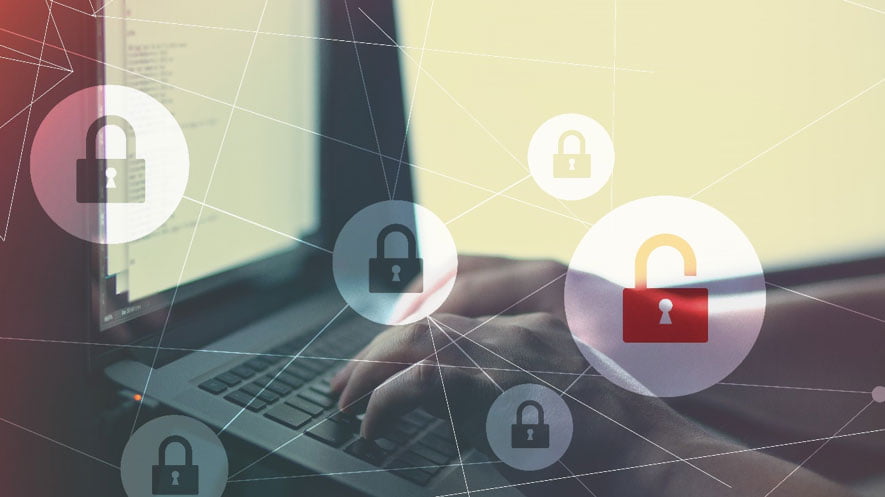
The Various Facets of Cybersecurity
Cybersecurity is an extensive area that spans numerous disciplines. We can categorize it into seven primary components:
Network Security
The majority of cyber attacks transpire over the network. ITech Plus’s network security solutions are designed to detect and fend off these attacks. These solutions incorporate data and access controls like Data Loss Prevention (DLP), Identity Access Management (IAM), Network Access Control (NAC), and Next-Generation Firewall (NGFW) application controls to enforce safe internet usage policies.
Know What is cybersecurity
Advanced network threat prevention technologies using a layered approach comprise Intrusion Prevention System (IPS), Next-Gen Antivirus (NGAV), Sandboxing, and Content Disarm and Reconstruction (CDR). Network analytics, threat hunting, and automated Security Orchestration and Response (SOAR) technologies are also vital components.
Cloud Security
As organizations increasingly adopt cloud computing, ensuring cloud security becomes a top priority. A comprehensive cloud security strategy encompasses cybersecurity solutions, controls, policies, and services that aid in protecting an organization’s entire cloud deployment against attacks.
While many cloud providers offer security solutions, these often fall short of providing enterprise-level security. Supplementary third-party solutions are required to safeguard against data breaches and targeted attacks in cloud environments.
What is Endpoint in cybersecurity
Endpoint Security
The zero-trust security model recommends creating micro-segments around data, regardless of its location. This can be achieved using endpoint security, especially with a mobile workforce. By leveraging endpoint security, companies can secure end-user devices like desktops and laptops with data and network security controls, advanced threat prevention mechanisms like anti-phishing and anti-ransomware, and technologies that offer forensics, such as endpoint detection and response (EDR) solutions.
What is cybersecurity In Mobile Security
Mobile Security
The Mobile devices, like tablets and smartphones, often gain access to corporate data, posing threats to businesses through malicious apps, zero-day, phishing, and instant messaging attacks. Mobile security thwarts these attacks and secures the operating systems and devices against rooting and jailbreaking. Combined with a Mobile Device Management (MDM) solution, it allows enterprises to ensure only compliant mobile devices access corporate assets.
IoT Security
The use of Internet of Things (IoT) devices, while beneficial in terms of productivity, exposes organizations to new cyber threats. Threat actors aim to exploit vulnerable devices connected unknowingly to the internet for malicious activities.
IoT security protects these devices through the discovery and classification of connected devices, auto-segmentation to regulate network activities, and using IPS as a virtual patch to prevent exploits against susceptible IoT devices. In some instances, the device’s firmware can also be augmented with small agents to thwart exploits and runtime attacks.
Application Security
Web applications, like other things directly connected to the internet, are targets for threat actors. The OWASP has, since 2007, tracked the top 10 threats to critical web application security flaws like injection, broken authentication, misconfiguration, and cross-site scripting, to name a few.
Application security can halt the OWASP Top 10 attacks. It also prevents bot attacks and stops any malicious interaction with applications and APIs. Continuous learning ensures that apps remain protected even as DevOps releases new content.
Zero Trust
The traditional security model focuses on the perimeter, building walls around an organization’s valuable assets. However, this approach has limitations such as the potential for insider threats and the rapid dissolution of the network perimeter.
As corporate assets move off-premises due to cloud adoption and remote work, a new security approach is required. Zero trust offers a more granular security approach, protecting individual resources through a combination of micro-segmentation, monitoring, and the enforcement of role-based access controls.
The Evolution of the Cyber Security Threat Landscape
Today’s cyber threats are not the same as they were a few years ago. As the cyber threat landscape shifts, organizations require protection against the current and future tools and strategies of cybercriminals.
Gen V Attacks
The cybersecurity threat landscape is continuously evolving. Occasionally, these developments represent a new generation of cyber threats. To date, five generations of cyber threats and solutions designed to mitigate them have been experienced, including: The first generation primarily involved viruses and worms, while the second introduced more sophisticated attacks like Trojans and spyware. As we progressed, the third generation brought about issues such as phishing and ransomware, prompting organizations to develop stronger defenses. Today, as we face the complexities of the fifth generation, including advanced persistent threats and state-sponsored attacks, it is crucial for businesses to adopt best practices, including implementing the ‘5 steps to enhance cyber security’ to safeguard their systems effectively. To stay ahead of these evolving threats, organizations must prioritize regular updates and patches to their software systems. This includes a proactive approach to security by urging employees to upgrade Microsoft software now, as outdated applications can serve as gateways for cybercriminals. By fostering a culture of cybersecurity awareness and ensuring that all software is up to date, businesses can significantly reduce their vulnerability to attacks and enhance their overall resilience against future threats.
1-Gen I (Virus): In the late 1980s, virus attacks against standalone computers inspired the creation of the first antivirus solutions.
2-Gen II (Network): With the onset of internet-based cyberattacks, the firewall was developed to detect and block them.
3-Gen III (Applications): The exploitation of vulnerabilities within applications led to the widespread adoption of intrusion prevention systems (IPS).
4-Gen IV (Payload): As malware became more targeted and could evade signature-based defenses, anti-bot and sandboxing solutions were essential for detecting novel threats.
5-Gen V (Mega): The most recent generation of cyber threats employs large-scale, multi-vector attacks, prioritizing advanced threat prevention solutions.
Each generation of cyber threats rendered previous cybersecurity solutions less effective or essentially obsolete. Defending against the modern cyber threat landscape demands Gen V cybersecurity solutions.
Supply Chain Attacks
Historically, many organizations’ security efforts have centered around their applications and systems. By fortifying the perimeter and only allowing access to authorized users and applications, they attempt to deter cyber threat actors from infiltrating their networks. However, as cyber threats have evolved and become more sophisticated, this perimeter-centric approach is often inadequate. Organizations now realize the importance of understanding how to secure network infrastructure beyond just defending the perimeter. This involves implementing layered security strategies, including robust authentication methods, continuous monitoring, and employee training to enhance overall resilience against potential breaches.
However, a recent increase in supply chain attacks has exposed the limitations of this approach, demonstrating cybercriminals’ ability and willingness to exploit these vulnerabilities. Events like the SolarWinds, Microsoft Exchange Server, and Kaseya hacks showcased how trust relationships with other organizations can be a weak link in a corporate cybersecurity strategy. By exploiting one organization and leveraging these trust relationships, a cyber threat actor can gain access to all of their customer networks. To mitigate the risks associated with supply chain attacks, it is crucial for businesses to implement robust cybersecurity best practices for businesses, including thorough vendor assessments and continuous monitoring of their partners’ security postures. Additionally, fostering a culture of cybersecurity awareness among employees ensures that all team members remain vigilant against potential threats. Only by strengthening these inter-organizational defenses can companies hope to protect themselves and their clients from the cascading effects of such attacks. Investing in advanced threat detection technologies can further enhance a company’s defenses against supply chain vulnerabilities. As organizations work towards navigating cybersecurity for businesses, collaboration with cybersecurity experts and sharing threat intelligence can empower them to better anticipate and respond to emerging threats. Ultimately, a proactive and comprehensive approach to cybersecurity will not only safeguard individual businesses but also strengthen the overall resilience of the entire industry.
Defending against supply chain attacks necessitates a zero-trust approach to security. While partnerships and vendor relationships are beneficial for business, third-party users and software should have limited access, restricted to only what is necessary to fulfill their roles and should be under continuous monitoring.
Ransomware
While ransomware has been around for decades, it only emerged as the dominant form of malware in the last few years. The WannaCry ransomware outbreak demonstrated the feasibility and profitability of ransomware attacks, triggering a sudden increase in ransomware campaigns.
Since then, the ransomware model has drastically evolved. Whereas ransomware used to encrypt files only, it now also steals data to extort the victim and their customers in double and triple extortion attacks. Some ransomware groups also threaten or use Distributed Denial of Service (DDoS) attacks to incentivize victims to meet ransom demands.
The growth of ransomware has also been facilitated by the emergence of the Ransomware as a Service (RaaS) model. In this model, ransomware developers provide their malware to “affiliates” to distribute in exchange for a share of the ransom. With RaaS, many cybercrime groups gain access to advanced malware, making sophisticated attacks more prevalent. As a result, ransomware protection has become a vital part of the enterprise cybersecurity strategy.
Phishing
Phishing attacks have long been the most common and effective means by which cybercriminals gain access to corporate environments. It is often much easier to trick a user into clicking a link or opening an attachment than it is to identify and exploit a vulnerability within an organization’s defenses. As cybercriminals become increasingly sophisticated in their tactics, it is essential for companies to implement robust security measures. Employee training, regular simulations, and advanced email filtering can significantly reduce the risk of falling victim to these attacks. By taking proactive steps to protect your business from phishing, organizations can safeguard sensitive information and maintain their reputation in the marketplace.
In recent years, phishing attacks have become more sophisticated. While the original phishing scams were relatively easy to detect, modern attacks are so convincing and sophisticated that they can be virtually indistinguishable from legitimate emails.
Employee cybersecurity awareness training is not enough to protect against modern phishing threats. Managing the risk of phishing necessitates cybersecurity solutions that identify and block malicious emails before they reach
- Network security
- Cloud security
- Endpoint security
- Mobile security
- IoT security
- Application security
- Zero trust security
With its comprehensive security solutions, ITech Plus can offer seamless and efficient protection, simplifying the management of an organization’s security and freeing its teams to focus on its core business.
If you would like to learn more about how ITech Plus can support your organization’s security needs, contact us today.

Add a Comment